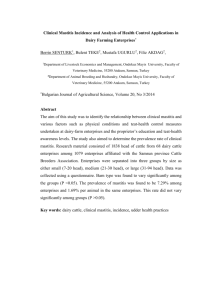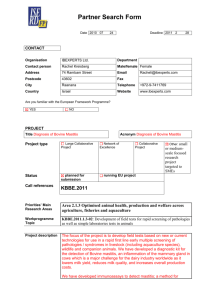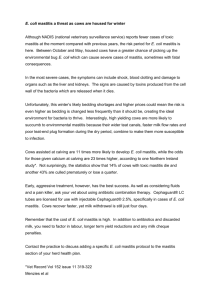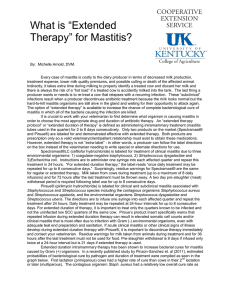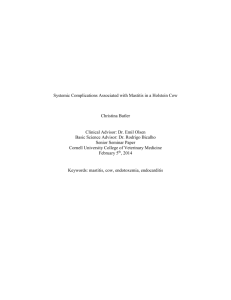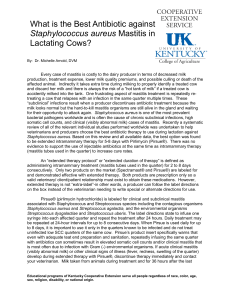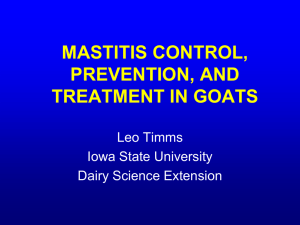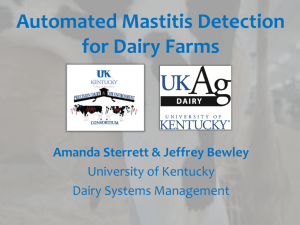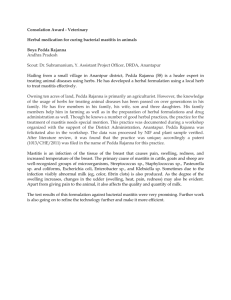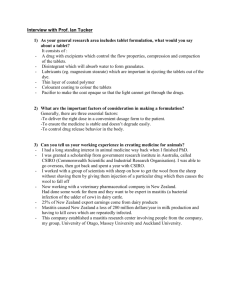Christina Butler Summary 2014
advertisement
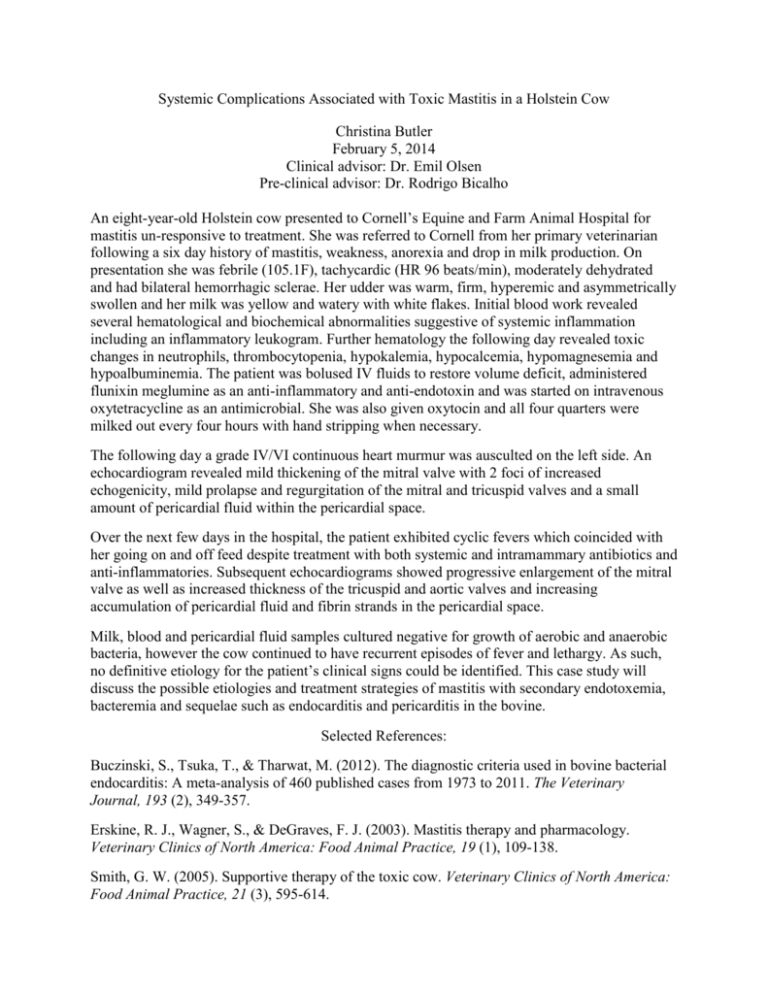
Systemic Complications Associated with Toxic Mastitis in a Holstein Cow Christina Butler February 5, 2014 Clinical advisor: Dr. Emil Olsen Pre-clinical advisor: Dr. Rodrigo Bicalho An eight-year-old Holstein cow presented to Cornell’s Equine and Farm Animal Hospital for mastitis un-responsive to treatment. She was referred to Cornell from her primary veterinarian following a six day history of mastitis, weakness, anorexia and drop in milk production. On presentation she was febrile (105.1F), tachycardic (HR 96 beats/min), moderately dehydrated and had bilateral hemorrhagic sclerae. Her udder was warm, firm, hyperemic and asymmetrically swollen and her milk was yellow and watery with white flakes. Initial blood work revealed several hematological and biochemical abnormalities suggestive of systemic inflammation including an inflammatory leukogram. Further hematology the following day revealed toxic changes in neutrophils, thrombocytopenia, hypokalemia, hypocalcemia, hypomagnesemia and hypoalbuminemia. The patient was bolused IV fluids to restore volume deficit, administered flunixin meglumine as an anti-inflammatory and anti-endotoxin and was started on intravenous oxytetracycline as an antimicrobial. She was also given oxytocin and all four quarters were milked out every four hours with hand stripping when necessary. The following day a grade IV/VI continuous heart murmur was ausculted on the left side. An echocardiogram revealed mild thickening of the mitral valve with 2 foci of increased echogenicity, mild prolapse and regurgitation of the mitral and tricuspid valves and a small amount of pericardial fluid within the pericardial space. Over the next few days in the hospital, the patient exhibited cyclic fevers which coincided with her going on and off feed despite treatment with both systemic and intramammary antibiotics and anti-inflammatories. Subsequent echocardiograms showed progressive enlargement of the mitral valve as well as increased thickness of the tricuspid and aortic valves and increasing accumulation of pericardial fluid and fibrin strands in the pericardial space. Milk, blood and pericardial fluid samples cultured negative for growth of aerobic and anaerobic bacteria, however the cow continued to have recurrent episodes of fever and lethargy. As such, no definitive etiology for the patient’s clinical signs could be identified. This case study will discuss the possible etiologies and treatment strategies of mastitis with secondary endotoxemia, bacteremia and sequelae such as endocarditis and pericarditis in the bovine. Selected References: Buczinski, S., Tsuka, T., & Tharwat, M. (2012). The diagnostic criteria used in bovine bacterial endocarditis: A meta-analysis of 460 published cases from 1973 to 2011. The Veterinary Journal, 193 (2), 349-357. Erskine, R. J., Wagner, S., & DeGraves, F. J. (2003). Mastitis therapy and pharmacology. Veterinary Clinics of North America: Food Animal Practice, 19 (1), 109-138. Smith, G. W. (2005). Supportive therapy of the toxic cow. Veterinary Clinics of North America: Food Animal Practice, 21 (3), 595-614.
